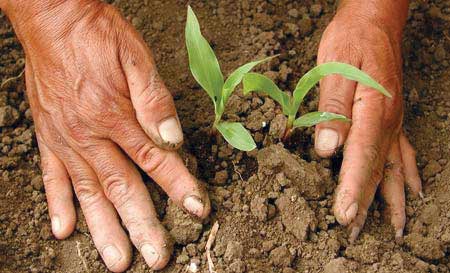 A new era began this week with the launch of the CGIAR Research Program MAIZE, a US$170 million global alliance to expand and accelerate research into maize, on 06 July 2011. The announcement was made during a celebration of the CGIAR’s 40th birthday, held at the World Bank headquarters in Washington, marking a new direction for the CGIAR and demonstrating that after four remarkable decades it remains vigorous and committed to addressing emerging challenges.
A new era began this week with the launch of the CGIAR Research Program MAIZE, a US$170 million global alliance to expand and accelerate research into maize, on 06 July 2011. The announcement was made during a celebration of the CGIAR’s 40th birthday, held at the World Bank headquarters in Washington, marking a new direction for the CGIAR and demonstrating that after four remarkable decades it remains vigorous and committed to addressing emerging challenges.
“This program aims to double the productivity of maize farms, while also making those farms more resilient to climate change and reducing the amount of land used for growing the crop,” said Carlos Perez del Castillo, CGIAR Consortium Board Chair. “As a result, farmers’ incomes are expected to rise and their livelihood opportunities to increase, contributing to rural poverty reduction in developing countries.” Maize is the preferred staple food source for more than 900 million people, including one third of the world’s malnourished children. The program’s first target group is smallholder farmers, among the most vulnerable people in developing countries, particularly those who live in stress-prone environments and have poor market access. Forty million smallholder farm family members are expected to see direct benefits by 2020 and 175 million by 2030.
The program will be implemented by CIMMYT and the International Institute of Tropic Agriculture (IITA), together with over 350 public and private partners worldwide. CIMMYT studies show that the demand for maize in the developing world is expected to double between now and 2050. Meanwhile, agriculture is under pressure from population growth, climate change, and natural resource degradation. Future expansion of maize area will come at the cost of crop diversity, forests, and erodible hill slopes. Fertilizer, water, and labor costs are also rising.
The challenge for MAIZE therefore is to find sustainable ways to grow significantly more maize on less land than ever before. The program is based on nine strategic initiatives, reflecting priorities for maize research. These are:
- Socioeconomics and policies for maize futures
- Sustainable intensification and income opportunities for the poor
- Smallholder precision agriculture
- Stress tolerant maize for the poorest
- Towards doubling maize productivity
- Integrated postharvest management
- Nutritious maize [bio-fortified varieties]
- Seeds of discovery [mobilizing maize genetic diversity]
- New tools and methods for NARS and SMEs
All the strategic initiatives also include capacity building to empower a new generation of women and men scientists. The program is expected to provide enough maize to meet the annual food demands of an additional 135 million consumers by 2020 and 600 million by 2030.
“This is a highly ambitious project to address world hunger,” said Thomas Lumpkin, CIMMYT Director General. “It will take an enormous amount of work and cooperation between public and private sector institutions to meet the goals. The global challenges facing mankind are immediate and chronic; the time to act is now. Millions of lives depend on our ability to develop sustainable solutions to feed more people with fewer resources than ever before.”
For more information, see the proposal document at: https://www.cimmyt.org/en/what-we-do/ maize-and-wheat-cgiar-programs
 Capacity development
Capacity development